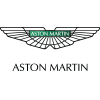Imagine Lifestyles is proud to offer luxury BMW Car Rentals in Miami, FL, South Florida, Los Angeles, CA, New York, NY and Chicago, IL.
Learn more about the history of these luxury cars below, or about our complete fleet of luxury car rentals.
BMW Beginnings
The luxury car brand Bavarian Motor Works better known as BMW, is a German automobile and motorcycle manufacturing company. Founded in 1916, the firm is best known for its performance and luxury vehicles.
Karl Rapp founded Rapp-Motorenwerke in an old bicycle factory near Munich, Germany. Rapp started making his own aircraft engines, then building Austro-Daimler aircraft engines under license. Rapp owned Motoren Werke, which was renamed Bayerische Motoren Werke GmbH.
Near Rapp’s factory, Gustav Otto began building small aircrafts. Otto was the son of the inventor of the four-stroke internal combustion engine, and found success with his Bayerische Flugzeugwerke. In 1916, Gustav Otto’s established Bayerische Flugzeugwerke AG (BFW). Then by 1922, neighbors BFW and BMW GmbH combine to form the BMW company. That same year, the first BMW factory was built on Neulerchenfeldstrasse, which was the site of Otto’s old aircraft factory. Post World War I, BMW began shifting from an aircraft engine production to motorcycle and automobile production firm. The production of the Dixi car in 1928 helped BMW survive the Great Depression. The Type 328 Roadster was introduced before World War II and won 120 racing victories between 1936 and 1940.
Post War BMW
Post World War II, BMW launched the 501 which was a grandeur sedan. Followed by the 502 which was powered by the world’s first light-alloy V8 engine. Despite the new technology, the best selling BMW of the 1950’s was the Isetta, a two-seater “microcar.” BMW automobile sales increased into the 1960’s, thanks in part to the popularity of the 1500 which was a sporty family sedan. By the 1970’s, BMW had established itself as a fully developed car marque. BMW was on the forefront of emerging technologies such as turbocharging and other vehicle electronics. BMW North America was launched along with the now familiar three tier sports sedan range. The range consisted of 3 Series, 5 Series and 7 Series cars; plus, the performance M division was developed.
BMW: The 1980’s, 90’s and Beyond
In 1981 BMW becomes the first European car importer to set up a subsidiary in Japan. In 1983 Brazilian Nelson Piquet beats Frenchman Alain Prost for the Formula 1 World Championship in a Brabham powered by a BMW four-cylinder turbo-engine. Additionally in Geneva, BMW is first to demand lead-free petrol in Europe. By 1986, the BMW 745i is produced with direct fuel injection and is the first European car with a liquid hydrogen tank and inter nal fuel preparation. In 1987, BMW’s Research & Development Center in Munich employs 6,000 people. BMW produces the first German twelve-cylinder automobile engine, develops an electronic diesel injection system, phases in on-board diagnostics in models of all series, and, with the M3, wins the only World Touring Car Championship ever held.
Throughout the 1990’s BMW focused on expanding its global reach. BMW opened its first U.S. factory in the late 1990’s and has expanded its brand empire to include Mini and Rolls-Royce. BMW has also continued to build motorcycles since the 1920’s. The marque’s famous slogan ” the ultimate driving machine,” is more than just a good advertising campaign. Throughout its history, BMW has become an industry standard for performance and luxury. Not only is BMW in over 30,000 segments worldwide but the car firm basically has a car for everyone. From family geared wagons, luxury sedans and coupes to sports cars and spacious SUVs, BMW seems to have a car for any need, want or desire.






